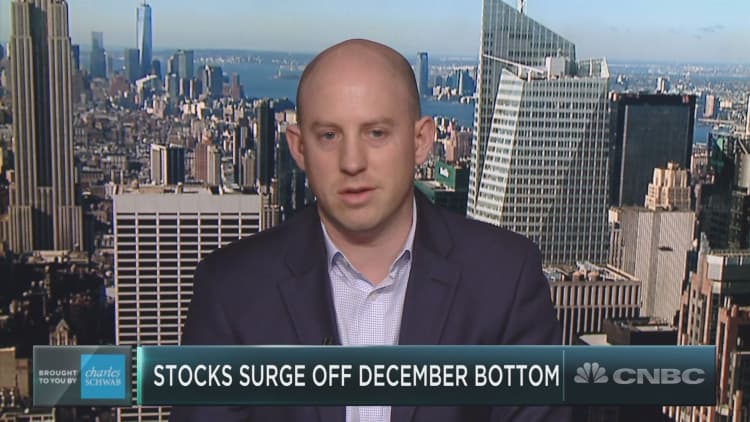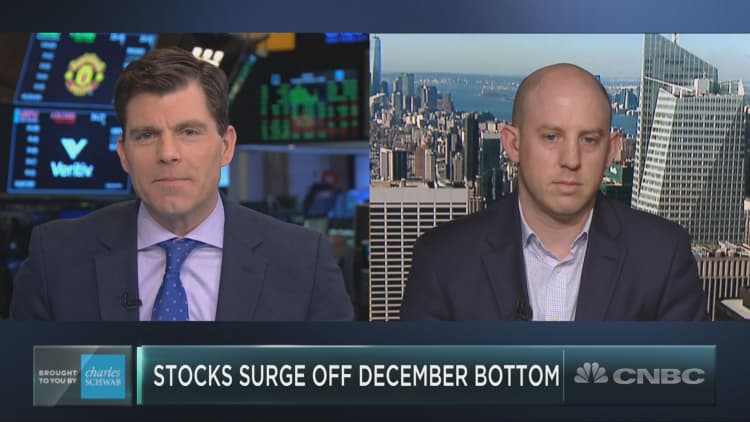
What December sell-off? Stocks have rocketed off Dec. 26 lows with the rising by more than 16 percent and coming within points of breaking above its 200-day moving average again.
However, more often than not, when markets see this kind of bounce, it often proves a head fake, says Michael Batnick, director of Research at Ritholtz Wealth Management.
"Any time that you have such a strong bounce and you're still below the 200-day moving average, by definition, you're in a lousy market environment," Batnick said on CNBC's "Trading Nation" on Tuesday. "The previous five times this happened it was near lows but not necessarily at lows."
In November 1974, for example, the S&P 500 rallied off lows before plummeting to a new bottom the following month. Then, in the summer and fall of 2002, the S&P peaked and tumbled twice before finding its bottom in March 2003.
It's not always the case, though, says Batnick — the fourth time markets rallied beneath the 200-day in late 2008, a bottom was not made, but the fifth time it was.
"It happened in December 2008, which certainly as everybody remembers was nowhere near the bottom. And then finally in April 2009, we had one of those big bounces, still below the 200-day, and that was in hindsight a good time to be buying stocks," he said.
However, Batnick cautions not to make too much of the data.
"Four out of five times this was a dead-cat bounce but that doesn't mean that there's an 80 percent chance that this falls apart because we're dealing with a tiny, tiny sample size. So take that definitely with a giant grain of salt," he said.
A few technical factors do signal strength in this rally that could mean it can hold true, though, says Batnick.
"The advance-decline line looks a lot better than the index does, meaning that we're having more participation for the first time in quite a while," he said. "Equal-weight baskets are outperforming the market-cap weighted indexes, … so this is not a rally that is just being led by the mega-cap stocks, which is what we've sort of become accustomed to over the past few years."
The Nasdaq 100, for example, is up 12 percent from its December bottom, says Batnick, while the equal-weighted equivalent has risen 15 percent.






